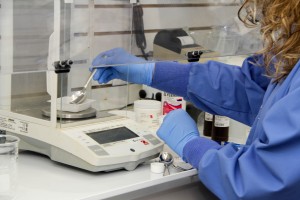Psoriasis does not have a cure, but there are many treatment options available to minimize and eliminate symptoms. Some patients have triggers that aggravate psoriasis. Aggravating factors include: alcohol use, cold/dry weather, some medications, infections, hormone changes, skin injury or trauma, smoking, stress, and over or underexposure to sunlight. Besides avoiding triggers, topical medications are the first line treatment for patients with psoriasis. Treatment focuses on slowing or normalizing cell growth and reducing inflammation. Compounding 2 or more ingredients together into a single ointment, allows psoriasis to be treated by several different ways at the same time and eases use by the patient. Medications frequently used in psoriasis topical compounds are coal tar, steroids, salicylic acid/urea/alpha-hydroxy acid, anthralin, retinoids, and tacrolimus/cyclosporine.
Coal tar, salicylic acid, urea, and alpha-hydroxy-acid soften and exfoliate skin. These products are usually applied to thick scaly lesions to help remove scales. With less scales and softer skin, steroid and other medication absorption is enhanced.
Coal tar is the most medication used in the treatment of psoriasis and most beneficial in treating psoriasis on the scalp. It prevents cell growth and development at the DNA level, causing thinner plaques. Coal tar has been used for over 100 years for psoriasis and is often used in combination with steroids. Coal tar is usually prepared in concentrations between 0.5-5% and left on for 2 hours, then rinsed off. Coal tar can stain clothing and bedding and has an unpleasant smell.
Salicylic acid is often compounded in strong concentrations of up to 20% and used for 2 weeks, then decreased thereafter. Urea promotes skin hydration and is often used as a moisturizer in compounds. Alpha-hydroxy-acid prevents skin cells from sticking together and allows for the top layer of skin to be removed. Studies show the addition of 15-25% alpha-hydroxy-acid and steroids in compounded products buffered to a pH of 3.8 enhances healing of psoriasis. Irritation, redness, and itching can occur with chronic use of these meds. If large areas of skin are covered with salicylic acid, skin burning and toxicity can occur.
Anthralin is used for patients who have failed coal tar and salicylic acid/urea/alpha-hydroxy-acid therapy and is used for a short time. Anthralin suppresses the immune system and reduces growth of skin cells, which decreases skin formation and plaque development. Anthralin is often combined with coal tar and used in combination with ultraviolet light therapy. Anthralin can stain the skin, clothing and bedding. Anthralin can irritate healthy skin.
Topical corticosteroids reduce itching and have anti-inflammatory, immune and growth suppressive properties. Chronic use of steroids can decrease efficacy as the body gets a tolerance to the steroid. Following steroid use, a steroid-free time should be implemented to avoid drug tolerance.
Retinoids are vitamin A analogs that normalize cell growth and differentiation. Retinoids work slowly and is regularly used in combination with steroids. Topical retinoids are much safer than oral retinoids, which is why topically application is preferred. Topical retinoids can cause thin, dry skin, rashes, sun sensitivity, and hair loss.
Tacrolimus and cyclosporine are antimetabolite medications that can be toxic to cells, preventing growth and function. Orally, these medications can cause hepatic dysfunction, anemia, nausea, and vomiting requiring frequent blood monitoring. When added to topical products, these adverse reactions can be prevented and decrease psoriatic plaques.


